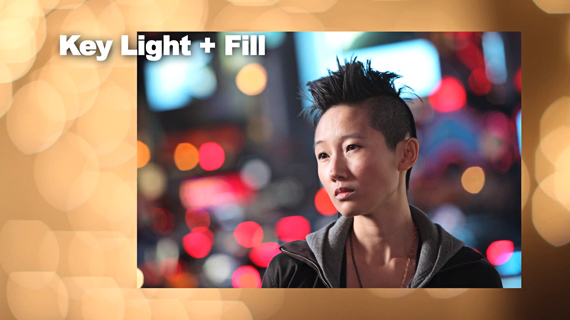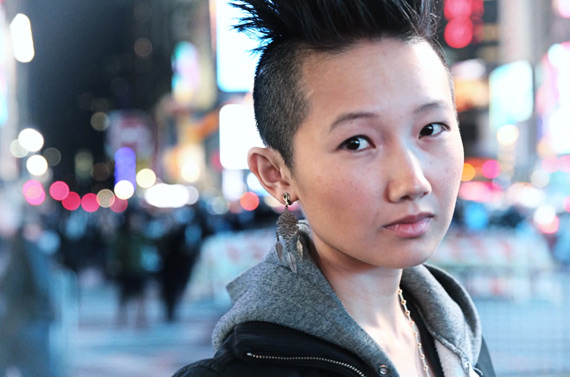Times Square in New York is any photographer’s bokeh heaven – the stoplights, billboards, street signs and headlights make for an interesting backdrop to any photo. Whether you’re shooting wide open or otherwise, Times Square will not disappoint. Jay P. Morgan explains in detail how to experiment with different lenses and distances from the subject and background to create various bokeh effects:
Some key principles to remember:
- Get close to the subject.
- Stay far away from the background.
- Keep aperture wide open.
- Pinpoint lights (e.g. light bulbs, stoplights) are better than light screens (e.g. fluorescents, billboards).

Not blurry enough

Better bokeh

Nicer when farther from wall

Stepping closer to the subect decreases depth of field

Effect is similar to the photo shot with the 50mm f/2.8 lens at 2.5 feet from subject; 13 feet from the wall

Head size increases but bokeh is really nice
As you can see, you can achieve similar bokeh effects with different lenses by studying where to position yourself relative to the subject and background. Having your subject shift a few feet forward or backward could make a huge difference in the shape, size and opacity of the out-of-focus lights in your background.

Billboards create unpredictable patterns and colors of light
The term “bokeh” comes from Japanese and means “blur” or “haze”.
Like This Article?
Don't Miss The Next One!
Join over 100,000 photographers of all experience levels who receive our free photography tips and articles to stay current:









Leave a Reply